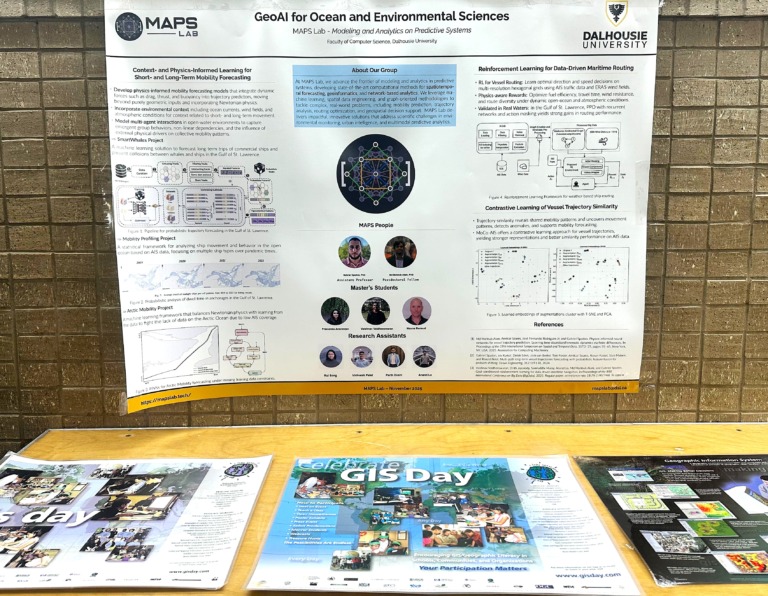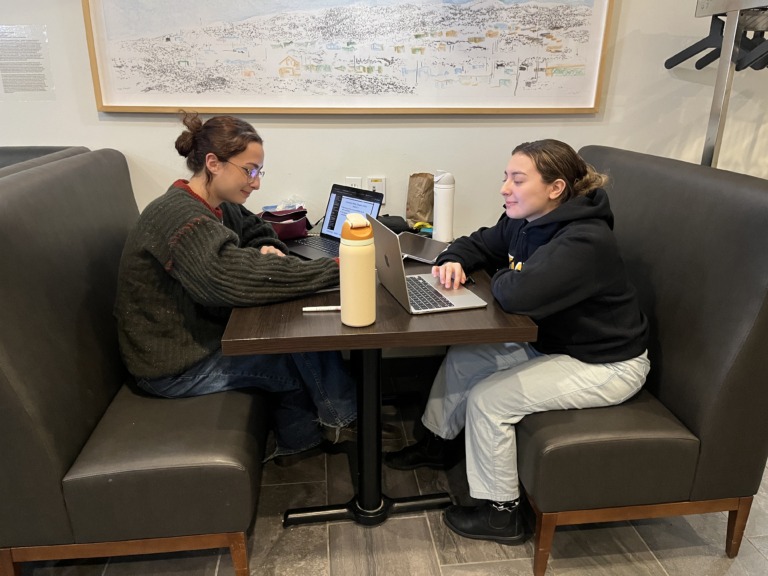
Robot Sex
NSCAD exhibit questions technology and sex
What is the relationship between technology and sex? Does technology help or hinder sex? What risks do we unknowingly face in a world where sex and computerized technology are more intertwined than ever before?
Artist Ian Williams’s Nova Scotia College of Art and Design exhibit, Robot Sex, ponders these questions. The exhibit, which ran from Jan. 21 to 25, consisted of expanded media projects as well as textile works made from unconventional materials like electrical cables.
Sex and AI
“I’m really fascinated by the relationship between technology and sex, because I think it’s simultaneously empowering and exploitative,” says Williams.
One of the pieces in the exhibit is an expanded media project made in collaboration with artist Max Dooher. The piece uses a facial recognition model trained on public data from the dating app Grindr. Once someone enters the booth and activates the computer, the technology assesses the user’s facial characteristics. Based on the data it was trained on, it then categorizes the user into one of five categories that people on Grindr have self-identified with, for instance “bear” or “twink.”
“For some people, [technology] is the only way they can have sex in the way they want. And then for other people, you know, it can really sort of take the humanity and power of sex away from them,” says Williams.
The expanded media project was a comment of sorts on Grindr’s recent decision to introduce a clause to their terms and conditions stating that the app is allowed to use any user data uploaded to the app for the training of third party models without permission. Specifically, this means that by using the app, users are consenting to their biometric data being used to train romantic AI chatbot models.
“I kind of wanted to make this project so I could communicate how AI processes work … and can be weaponized,” Williams says.
The artistic process
The exhibit also includes three wall hangings and two eroticized clothing sculptures — a lingerie set and a jock strap, draped over various technologies like a retro computer.
The wall hangings are made of hand-dyed electrical cables and woven together using traditional off-loom hand weaving techniques. The process of making the pieces was punishing — each piece took approximately 65-70 hours to complete.
The lingerie set is lined with Japanese silk, and the jock strap is lined with grey sweatpant material.
“I wanted to contrast the matte, hard, rough exterior with this more luxurious interior,” says Williams. “I think that speaks a lot to, you know, performing eroticism as well. You can perform eroticism to shield that sensitivity you have.”
Williams specifically designed the clothing sculptures as seen from a male gaze.
“I identify as non-binary, but for most of my life I’ve been socialized as a man,” says Williams.
Throughout their life they have experimented with different gender expressions. A lot of the experimentation was through forms of dressing.
“But the most intimate way of dressing is undergarments,” says Williams. “Making these undergarments was kind of my attempt at reconciling with the sort of deep effect that the male gaze has had on me in my presentation throughout life.”
Queerness and robots
Williams thinks that roboticization is not limited to computerized technology, and can also be found in things like makeup, going to the gym or restrictive clothing.
“It’s not good or bad to be a robot. It’s just a thing,” says Williams. “And to imply that because something is non-human, it is non valuable, is inherently a capitalist paradigm and is a way of dehumanizing things that we don’t understand.”
Williams points out that how things like plastic surgery, makeup or restrictive clothing is interpreted and valued depends on the person.
“I have countless trans friends whose lives have been infinitely bettered by these technologies and this ability to change themselves. And I also have other friends who really feel a pressure and a need to perform something.”
Williams doesn’t have a prescribed view that they hope viewers take away from the exhibit. However, they think it’s important to remain open to developments like robots and AI, especially keeping in mind queer history.
“I think it’s important that we, as people in these communities, understand how these technologies work, so they can’t be weaponized against us. And if we respond with fear of change … that is going against that same rhetoric that has been used to disenfranchise our communities throughout history.”
The exhibit, and the questions it’s asking, is one way of doing just that — remaining open-minded about technological developments while still asking scrutinizing questions.
“The more we can learn about how these things work and how the future might work will ultimately be better at large for everyone … the corporations who are developing this technology? They don’t give a fuck if you live or die. You’re already a robot to them.”
Williams can be found on Instagram at @kneesplint and is happy to answer any further questions about the exhibit.






